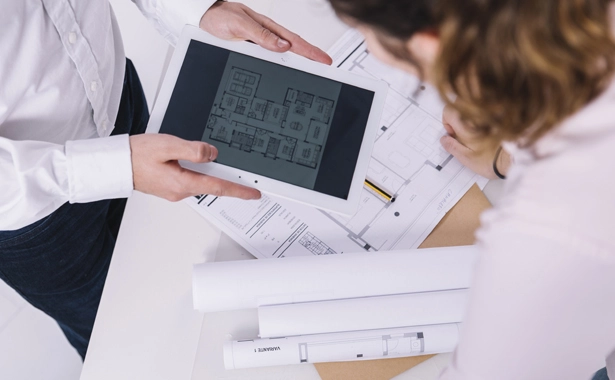Contents
In the ever-evolving field of construction, the design-build contract represents a significant shift from traditional project delivery methods. It integrates both design and construction services under a single contract with one entity, known as the design-builder or design-build contractor. This unified approach not only streamlines the process but also enhances communication, reduces conflicts, and accelerates project timelines. Unlike the conventional method where design and construction are contracted separately and often to different entities, the design-build system centralizes responsibilities, offering various advantages such as cost efficiency and improved project coordination. This article explores the structure, functioning, and benefits of design-build contracts, shedding light on why they are increasingly favored for projects requiring tight schedules, controlled budgets, and flexible, innovative solutions.
What Is a Design-Build Contract?
A design build contract is a project delivery method used primarily in the construction industry. It combines the design and construction services under one contract with a single entity known as the design-builder or design-build contractor. This approach contrasts with the traditional method of contracting separately for design and construction services, typically involving different companies.
Design-build contracts centralize project responsibilities under a single design-build firm, covering everything from initial design to final construction. This approach simplifies communication and accountability, providing the owner with just one point of contact. Time efficiency is enhanced as design and construction phases can overlap, with a single entity managing both, often allowing projects to be completed quicker than under traditional methods. Cost savings are another benefit, as design-build allows for integrated planning and execution, leading to more efficient resource use and lower overall costs. Additionally, having design and construction managed by the same entity reduces the likelihood of conflicts, such as disputes over design flaws or construction errors. Lastly, this setup encourages innovation, enabling the design-build team to develop solutions and designs that are uniquely tailored to meet the client’s specific needs and constraints.
This method is popular for projects that need fast completion, have a tight budget, or where the project scope is not well-defined from the outset. It is widely used in many types of construction, including public, commercial, and residential projects.
Functioning of a Design-Build Contract
A design-build contract streamlines the construction process by consolidating design and construction responsibilities under one entity, typically a design-build contractor or firm. Here is a step-by-step overview of how it works:
Project Initiation: The project owner defines the project’s scope and overall goals. This might include the project’s purpose, desired completion time, and budget constraints.
Selection of the Design-Builder: The owner selects a design-build firm through a bidding process or direct selection based on qualifications, experience, and proposal quality. The selection criteria often emphasize not just cost, but also the contractor’s ability to meet design and construction timelines and their approach to project management.
Project Design: Unlike traditional methods where the design is completed before construction bidding, in a design-build contract, the design phase is more collaborative and integrated with construction considerations. The design-build team works closely with the owner to develop the design, ensuring it aligns with the owner’s requirements and budget.
Construction Planning: Concurrent with the design, construction planning begins. This phase involves detailed scheduling, sourcing materials, and securing necessary permits. Since the design and construction teams are part of the same entity, any adjustments in design can be quickly reflected in construction plans, enhancing efficiency.
Execution: With designs and plans in place, construction starts. The design-build model allows for some design and construction activities to overlap, potentially accelerating the construction process. Throughout this phase, the design-builder coordinates all construction activities and remains the owner’s single point of contact for any issues or changes.
Completion and Handover: Once construction is complete, the design-build firm conducts thorough testing and final adjustments before handing over the completed project to the owner. The firm often remains accountable for any post-construction issues like defects or non-compliance with specifications.
This unified approach can lead to faster project completion, cost savings, and reduced administrative burden on the owner compared to traditional project delivery methods.
Typical Phases of a Design and Build Contract
Contract Award: The project owner selects a design-builder based on qualifications, proposals, or a bid process.
Project Initiation: Initial meetings to define the project scope, objectives, and deliverables.
Design Phase: The design team works to create a solution that meets the owner’s requirements while staying within budget.
Construction Planning: Concurrent with later design stages, construction planning begins, including procurement and scheduling.
Construction Execution: Physical construction of the project, managed by the design-builder.
Completion and Handover: Once construction is completed, the project is inspected and handed over to the owner.
Post-Construction Support: Includes addressing any issues under warranty.
Does a Design and Build Contract Offer More Benefits Than a Traditional Contract?
A Design and Build (D&B) contract can offer several benefits compared to a traditional procurement contract, but whether these benefits are more advantageous depends on the specific project requirements and goals. Here is a comparison of the key aspects of each:
Design and Build Contract
- Single-Point Responsibility: The design-builder is responsible for all aspects of the project, from initial design through final construction. This simplifies communication and decision-making, as the owner interacts with only one entity for both design and construction queries.
- Streamlined Process: Since both design and construction are handled by the same firm, the project can move more swiftly. The overlapping of design and construction phases often leads to a shorter project duration compared to traditional methods.
- Cost Efficiency: The design-builder can optimize construction techniques and materials from the beginning, potentially lowering costs. Additionally, since the design and construction teams are integrated, the project is less likely to face expensive redesigns or modifications.
- Reduced Risk: The design-build approach tends to shift more project risk to the design-builder. This can benefit the owner, as any cost overruns linked to the design errors are generally the responsibility of the design-builder, not the owner.
- Quality Control: With unified responsibility, the design-builder has an inherent interest in delivering high-quality work that adheres to the specified criteria to avoid costly changes and maintain reputation.
- Flexibility and Innovation: As the design-builder controls the entire project process, they have the flexibility to implement more innovative practices and solutions, responding dynamically to challenges as they arise.
Traditional Contract
- Quality of Design: Traditional contracts allow clients to engage directly with architects and designers, potentially resulting in higher-quality, more tailored designs.
- Competitive Bidding: Each phase of the project (design, bid, and build) can be bid on separately, which might result in lower costs due to competitive bidding.
- Control and Oversight: Clients have more control over each stage of the project, as they can select different contractors for design and construction, and closely manage the interfaces between them.
- Flexibility: Changes in the design can be more easily accommodated as the design process is separate from construction.
For complex projects, a traditional contract might be beneficial due to the enhanced ability to adapt and fine-tune designs as the project progresses. In contrast, simpler projects might benefit from the streamlined process of a Design-Build (D&B) contract. D&B contracts typically place more risk on the contractor, which can be an advantage for clients looking to minimize their risk exposure. However, this might also result in a premium cost if contractors anticipate and incorporate potential risks in their bids. Clients with strong project management and construction expertise might prefer traditional contracts as they allow more direct oversight and involvement in the construction process.
Primary Risks Associated with Design-Build Contracts
Design-build contracts offer several advantages in terms of simplicity, speed, and integration between the design and construction phases. However, they also come with distinct risks that need careful consideration.
Reduced Client Control
In a D&B contract, the client has less direct oversight over the design process because the Design-Build firm handles both design and construction. This can sometimes result in a final product that may not fully meet the client’s expectations or specific requirements, especially if not clearly communicated and documented in the initial phases.
Design Compromises
Since the same entity is responsible for both design and construction, there might be an inclination to favor construction methods and materials based on cost, availability, or ease of construction rather than optimal design or quality. This can potentially lead to compromises in the design quality or innovation.
Contractor Bias
The contractor might select materials and construction techniques that minimize their costs or complexity at the expense of better options. This risk is particularly pronounced where design considerations such as long-term durability or maintenance are sacrificed for immediate cost savings or schedule acceleration.
Limited Competitive Bidding
The integration of design and construction services into a single contract can limit the amount of competitive bidding. This might result in higher costs, as there are fewer opportunities to compare different bids for separate phases of the project.
Communication Issues
Even though one of the purported benefits of D&B is improved communication, the internal coordination within a Design-Build firm must be highly effective. Poor communication within the firm can lead to design inconsistencies and errors that only become apparent during construction.
Increased Legal and Financial Responsibility
The Design-Build firm assumes more comprehensive liability for the project, including design errors and construction defects. This consolidated risk can be daunting and might lead to higher costs for insurance and risk management.
Complexity in Modifications
Changes initiated by the client can be more complicated and costly in a D&B project. Since design and construction phases often overlap, changes that occur once construction has begun can lead to significant delays and cost overruns.
Potential for Lower Bidding
Because the Design-Build firm is responsible for the entirety of the project, there is a risk that they might be underbid to secure the contract, planning to make adjustments through change orders during the project’s progress. This can lead to disputes and dissatisfaction.
To mitigate these risks, it is essential for clients to clearly define their requirements, maintain open lines of communication with the Design-Build firm, and ensure that contracts include clauses that protect their interests, such as detailed performance specifications, caps on change order costs, and clear dispute resolution mechanisms.
Benefits of a Design-build Contract
Design-build contracts provide several significant benefits that can make them an attractive choice for many construction projects. Here are some of the primary advantages:
Streamlined Project Delivery: In a design-build contract, a single entity is responsible for both the design and construction of the project. This integration typically results in a more streamlined process, as it eliminates many of the coordination issues that can arise in traditional design-bid-build projects.
Enhanced Communication: With one team handling all aspects of the project, communication can be more efficient. There is no need to coordinate between separate design and construction teams, which often helps to minimize misunderstandings and errors.
Faster Completion: The overlap of design and construction phases can significantly speed up the overall project timeline. Since some construction work can begin while the final design is still being completed, the total project duration is often reduced compared to traditional methods.
Cost Savings: Design-build contracts can potentially lead to cost savings for the project owner. The design-build team can identify more cost-effective solutions and innovations early in the design process, which can reduce the overall project cost. Moreover, the reduced risk of delays and fewer change orders during construction also contribute to keeping the budget under control.
Improved Risk Management: The design-build firm assumes much of the risk for the project, including cost overruns and managing the complexities of the project. This consolidation of risk can provide a more predictable outcome for the project owner.
Quality Control: With the design-build approach, the same team is responsible for the quality of both the design and the construction. This can result in higher quality outcomes as the team is fully accountable for all aspects of the project.
Customization and Innovation: The design-build process encourages innovative and customized solutions. The design-build team is incentivized to think creatively to meet the project requirements efficiently and effectively, often leading to more innovative and tailored designs.
Single-Point Responsibility: Having a single entity responsible for every aspect of the project simplifies the resolution of any issues that arise. The owner needs to deal with only one firm for questions or concerns regarding the project, which can simplify project management.
These benefits make design-build contracts particularly suitable for projects where time, cost, and efficient communication are prioritized. This contracting method can be especially beneficial in complex projects where an integrated approach can significantly enhance project execution.
What Are the Roles of Design-build Contractors?
Design build contractors play a multifaceted role that combines the responsibilities of both a designer and a builder, streamlining the project delivery process including:
Design Management: Design-build contractors are responsible for the entire design process, from conceptualization to the final detailed drawings. This includes architectural, structural, and mechanical-electrical-plumbing (MEP) design. They must ensure that the design meets all client requirements and complies with relevant regulations and building codes.
Project Planning: They are involved in the planning phase, setting timelines, estimating costs, and scheduling work. This role also involves strategic planning to integrate design and construction tasks effectively, aiming to optimize both time and resources.
Regulatory Compliance and Permits: Obtaining necessary permits and ensuring compliance with all local, state, and federal regulations is a critical role. Design-build contractors navigate the legal landscape of the construction environment to ensure that all aspects of the project are legally compliant.
Construction Oversight: As the project transitions from design to construction, design build contractors oversee the construction process. This involves managing construction crews, coordinating subcontractors, ensuring the quality of work, and keeping the project on schedule and within budget.
Cost Management: They provide cost estimates and control project finances. Design-build contractors work to keep the project within the agreed budget, managing costs of materials, labor, and any unexpected issues that arise.
Communication and Coordination: Effective communication is crucial in the design-build process. Contractors serve as the single point of contact for the client, subcontractors, and any other stakeholders. They manage all communications, ensuring that information flows efficiently between all parties involved.
Quality Control: Design-build contractors are responsible for the quality of both design and construction. They implement quality control measures to ensure that the finished product adheres to the client’s specifications and industry standards.
Risk Management: They identify potential risks related to the project and implement strategies to mitigate them. This includes dealing with unforeseen issues during construction, such as delays or material shortages.
Client Relationship Management: Maintaining a positive relationship with the client is essential. Design-build contractors ensure that the client is regularly updated on progress and involved in key decisions, helping to maintain trust and satisfaction throughout the project duration.
Elements of Desing-build Contracts
Design-build contracts integrate various elements that streamline project delivery by combining design and construction services under a single agreement. Here are the fundamental elements typically included in design-build contracts:
Project Scope: Clearly defines the project’s scope, detailing what is to be constructed, the expected standards, and performance criteria. This includes specifications for all architectural, structural, and MEP (Mechanical, Electrical, Plumbing) components.
Design Services: Specifies that the design-build contractor will provide all necessary design services, from preliminary concepts to final construction drawings and specifications approved by relevant authorities.
Construction Services: Outlines the contractor’s responsibility to manage and execute construction, ensuring the project is built according to the design specifications and within the agreed timelines.
Project Schedule: Includes a comprehensive timeline for both design and construction phases, specifying critical milestones and completion dates.
Budget and Payment Terms: Details the project’s total cost, payment schedules, and conditions under which payments will be released. This often includes provisions for handling changes in scope and associated costs.
Quality Assurance and Control: Describes the standards for the materials, workmanship, testing, and inspections required to ensure the project meets all agreed-upon quality standards.
Risk Management: Outlines the risks assumed by each party, specifying insurance requirements and liability provisions to manage potential risks throughout the project lifecycle.
Change Order Procedures: Establishes a predefined method for managing changes in project scope, including how these changes will affect costs and schedules.
Dispute Resolution: Provides mechanisms for resolving disputes related to the project, which may include mediation, arbitration, or litigation procedures.
Performance Guarantees: Includes warranties and guarantees offered by the design-build contractor for the work performed, covering aspects like structural integrity and materials.
Regulatory Compliance: Ensures that all aspects of the design and construction comply with local, state, and federal regulations, including obtaining all necessary permits.
Contract Termination: Defines the conditions under which the contract can be terminated by either party, along with the procedures and consequences of such termination.
These elements work together to create a comprehensive contract that covers all aspects of a project from start to finish, reducing complexities and improving coordination between design and construction phases.
What Is a Design-Build Construction Contract?
A design-build construction contract is a type of project delivery method where one entity, the design-build contractor, enters into a single contract with the project owner to provide both design and construction services. This integrated approach differs significantly from traditional project delivery methods, where design and construction services are split between separate entities (typically requiring separate contracts).
This method is particularly advantageous for owners who wish to avoid the coordination tasks typical of traditional contracts, prefer faster project delivery, and appreciate having a single point of contact for all project-related issues.
Sample Design-Build Contract Outline
- Introduction
- Parties Involved: Identification of the owner and the design-build contractor.
- Effective Date: The date on which the contract becomes active.
- Definitions
- Define key terms used throughout the contract for clarity.
- Project Description
- Scope of Work: Detailed description of the work to be performed, project site, and final deliverables.
- Design Services
- Preliminary Designs: Requirements for initial designs and how they will be reviewed and approved.
- Final Designs: Process for finalizing design documents, including schedules and submission deadlines.
- Construction Services
- Construction Plans: Outline of construction phases, including key milestones.
- Site Management: Guidelines for site safety, security, and worker conduct.
- Project Schedule
- Timeline: Detailed timeline from design to completion, including milestones for design approval and construction phases.
- Compensation and Payment
- Contract Price: Total fixed price or cost-plus pricing model.
- Payment Schedule: Terms for when payments will be made, tied to milestones or specific dates.
- Incentives and Penalties: For early completion or delays.
- Changes to Work
- Change Orders: Procedure for handling changes in scope, including approval process and adjustments to contract price and schedule.
- Responsibilities of the Parties
- Contractor’s Responsibilities: Ensure all designs meet legal and safety standards and complete construction as per agreed specifications.
- Owner’s Responsibilities: Provide timely decisions and access to the site and fulfill financial obligations.
- Risk Management
- Insurance: Types and amounts of insurance each party must carry.
- Indemnification: Clauses protecting each party from liabilities caused by the other.
- Dispute Resolution
- Mechanisms: Include mediation, arbitration, or litigation processes.
- Termination
- Conditions: Conditions under which either party may terminate the contract.
- Consequences: Outlines consequences and settlement terms upon termination.
- Signatures
- Legal signatures of both parties and date, affirming agreement to the terms.
Conclusion
The design-build contract system represents a transformative approach in the construction industry, integrating design and construction services under one entity to streamline project delivery. This method significantly enhances efficiency, reduces conflicts, and improves overall project coordination. By consolidating responsibilities, the design-build approach not only simplifies communication between the owner and the contractor but also accelerates the project timeline, often resulting in cost savings and enhanced quality of the final product. Moreover, it provides the flexibility necessary to innovate and adapt solutions to specific project needs. Despite the risks associated with reduced client control and potential compromises in design quality, the advantages of a design-build contract typically outweigh its disadvantages, especially for projects requiring rapid completion or where budget and schedule predictability are critical. Ultimately, whether this approach is more advantageous than traditional contracts depends on the specific requirements and goals of each project. For many, the streamlined communication, single-point responsibility, and integrated project handling offer a compelling case for adopting design-build contracts, making them a preferred choice in today’s fast-paced construction environment.
Disclaimer: The content provided on this blog is for informational purposes only and does not constitute legal, financial, or professional advice.






